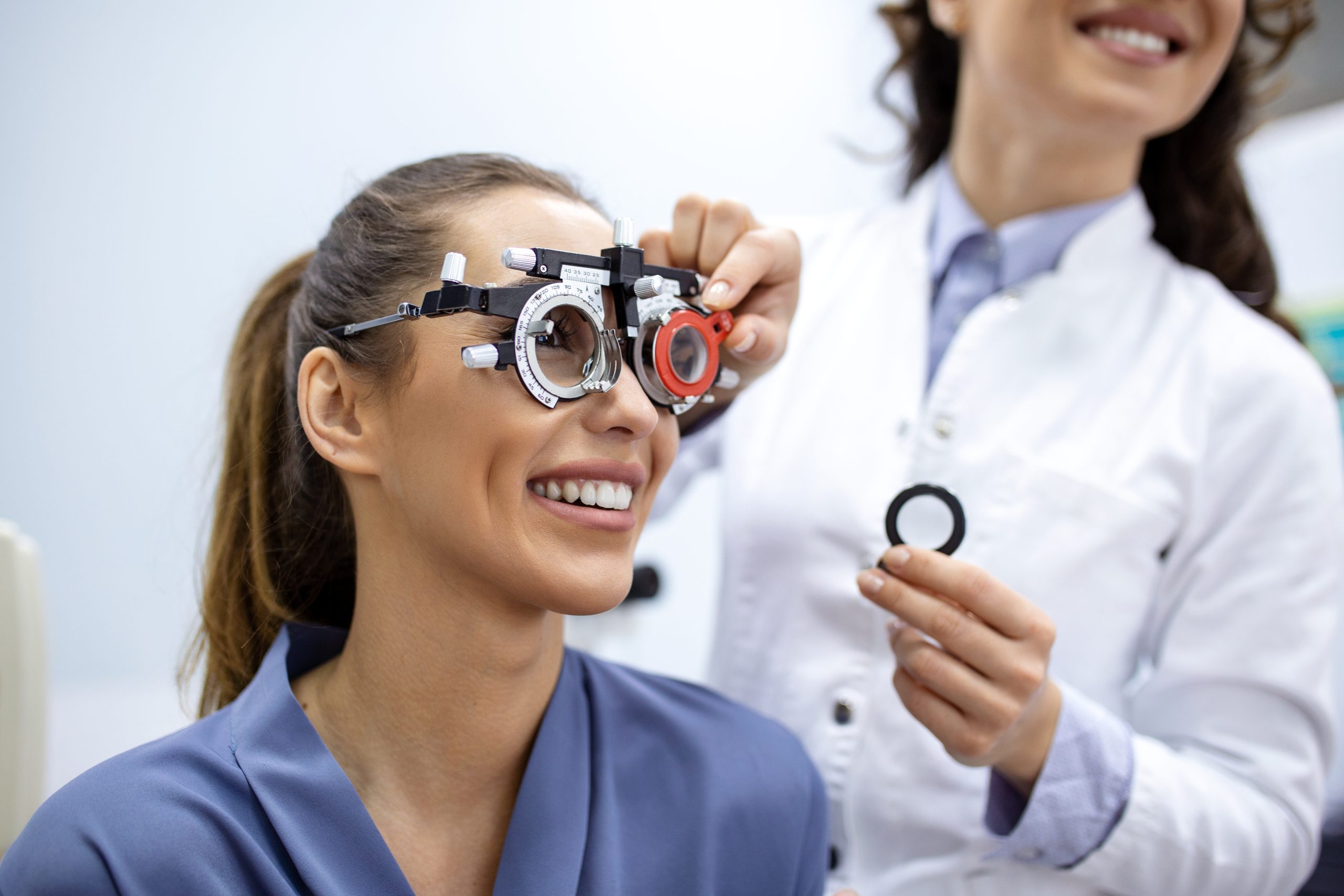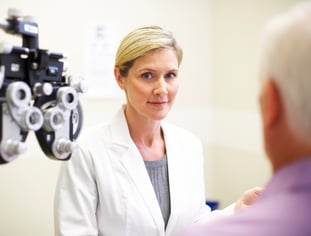Checking Out the current Technical Developments in Optometry and What They Mean for Eye Doctors
In the ever-evolving area of optometry, current technical developments are reshaping how experts approach eye care. From the precision of Optical Comprehensibility Tomography to the nuanced understandings used by AI-driven diagnostic devices, these technologies are setting new criteria in patient evaluation and treatment. Teleoptometry is poised to redefine ease of access, making certain that experience goes beyond geographical constraints. As these improvements permeate the method, eye doctors are encountered with the obstacle of embracing these devices to improve person end results. The question remains: exactly how will these technical shifts redefine the roles and responsibilities within the career?
Technologies in Diagnostic Tools
Progressing the area of optometry, technologies in analysis tools have actually transformed the way eye treatment professionals evaluate and identify eye conditions and visual impairments. The past decade has actually witnessed substantial technological improvements, making it possible for more detailed and accurate assessments.
An additional trick technology is the intro of advanced corneal topography systems, which map the surface curvature of the cornea with precision. These tools are especially valuable for fitting contact lenses and diagnosing corneal conditions. Electronic retinal imaging has transformed typical ophthalmoscopy, supplying detailed, breathtaking views of the retina that help with detailed visual evaluations.
The development of wavefront aberrometry has actually additionally been important, enabling the analysis of refractive mistakes with unparalleled accuracy (Optometrist Chino). This innovation aids in customizing corrective lenses and enhancing surgical outcomes for refractive surgical procedures. Collectively, these analysis improvements encourage optometrists to provide premium patient treatment, making certain early treatment and customized treatment approaches, eventually enhancing visual health end results
AI in Individual Monitoring
Structure on the structure of innovative diagnostic devices, the unification of synthetic knowledge (AI) in patient monitoring stands for a transformative jump for optometry. AI systems are increasingly utilized to enhance efficiency, precision, and personalization in individual care. By assessing substantial amounts of information, AI can determine patterns and predict prospective eye problems, making it possible for eye doctors to tailor treatments extra successfully. This ability is essential in managing persistent eye illness such as glaucoma and diabetic retinopathy, where early detection and continual surveillance are essential.
In addition, AI-driven platforms help with structured person interactions and administrative processes. Automated organizing, digital appointments, and personalized follow-up strategies not just boost client fulfillment yet additionally optimize time management for experts. These systems can triage clients based upon the necessity of their problems, ensuring that those in essential need obtain prompt focus.
Furthermore, AI boosts decision-making by giving eye doctors with evidence-based suggestions and therapy paths. By incorporating data from electronic wellness records, AI devices supply understandings that inform professional decisions, reducing the threat of mistakes and enhancing person end results. As AI proceeds to advance, its role in patient administration will likely expand, reshaping the landscape of optometric treatment.
Advancements in Retinal Imaging
In the world of optometry, retinal imaging has actually witnessed amazing technological innovations that are enhancing diagnostic capabilities and patient treatment. Developments such as Optical Coherence Tomography (OCT) and fundus photography have transformed exactly how eye doctors assess the retina and picture. OCT, particularly, offers high-resolution, cross-sectional images of the retina, enabling for the thorough examination of its layers. This capacity is very useful for early discovery and monitoring of problems like glaucoma, diabetic retinopathy, and age-related macular degeneration.
Boosted imaging methods like OCT angiography are further refining diagnostic precision. Opticore Optometry. Such developments promote the recognition of min retinal adjustments that can signify disease progression.
Moreover, developments in artificial knowledge are augmenting retinal imaging by enabling computerized evaluation of big datasets. These systems aid optometrists in determining patterns a measure of pathology, thereby improving diagnostic accuracy and effectiveness. Jointly, these innovations are transforming retinal imaging into a keystone of modern-day eye care, enhancing outcomes and expanding restorative possibilities.
Teleoptometry's Growing Function
Teleoptometry is increasingly becoming an essential part of eye care, driven by developments in digital communication and analysis devices. This is particularly beneficial in rural and underserved locations where accessibility to specialized eye care is often limited.
The assimilation of fabricated intelligence (AI) more improves teleoptometry, making it possible for the evaluation of aesthetic data and assisting in the detection of ocular problems such as glaucoma and diabetic retinopathy. AI-powered algorithms can swiftly translate complex imaging information, giving optometrists with important insights that boost scientific decision-making.
Additionally, teleoptometry supports connection of treatment through smooth combination with electronic wellness documents (EHRs), enabling optometrists to keep detailed individual histories. This makes sure that patients receive personalized and constant treatment even when speaking with different professionals.
In spite of these benefits, obstacles remain, including ensuring data safety and taking care of patient assumptions. Nonetheless, teleoptometry stands for a significant stride in the direction of even more available, effective, and patient-centered eye care. As modern technology evolves, its function is positioned to increase further.

Future Trends in Eye Care
A myriad of ingenious patterns is established to reshape the future of eye treatment, driven by technical advancements and the developing demands of people. One substantial pattern recommended you read is the integration of expert system find out this here (AI) in diagnostics, which promises to boost the accuracy and effectiveness of eye examinations. AI formulas can assess huge amounts of data from retinal photos, possibly discovering problems like diabetic person retinopathy and glaucoma earlier than typical techniques.
Furthermore, individualized medication is getting grip in optometry, with hereditary testing informing customized therapy plans. This strategy intends to optimize patient results by tailoring interventions to individual hereditary profiles. Wearable modern technology, such as smart call lenses, is also coming up, using real-time monitoring of intraocular stress or glucose degrees, therefore giving continual insights right into ocular and systemic wellness.
The adoption of increased fact (AR) and digital fact (VR) in training and patient education is an additional emerging fad. These innovations supply immersive experiences that can enhance understanding and abilities both for patients and optometrists. As these fads advance, optometrists need to stay abreast of technical advancements to supply cutting-edge care, making certain enhanced individual end results and satisfaction in the vibrant landscape of eye treatment.
Conclusion

Jointly, these analysis innovations equip optometrists to deliver remarkable individual care, ensuring very early treatment and tailored treatment approaches, eventually improving visual health and wellness outcomes.

As these modern technologies continue to develop, eye doctors should adjust and incorporate them into method, inevitably optimizing operations performance and raising the standard of eye care supplied to people.